
Stanzin and Namgyal, changpa herders, return to their settlement after a full day of herding their sheep in the mountains. Photograph by Manish Lakhani.
Every October, we conduct a week long mentored photography tour that offers an unparalleled opportunity to a small number of photography-enthusiasts to experience the life of changpa nomads. We stay in changpa settlements and interact closely with them, photographing and documenting their lives and lifestyle. To be a part of this unique photography tour, visit “Ladakh: Life of Changpa Nomads Photography Tour” to know more details and sign up.
Changpa people–these residents of Changthang–rely on their animals for livelihood, nourishment and survival. Their pashmeena goats yield fine wool that sells at a premium and is used for producing cashmere shawls. Their sheep feed on the nutritious high-altitude plants that produce valuable wool. The yaks yield butter, and the yak wool and skin form important insulation that protects them from the extreme cold winters. Life here is challenging, but living here for thousands of years has taught them how to survive and flourish in these conditions.
The Changpa live in small settlements that usually house about a score or more families together. They stay in these semi-permanent dwellings for a few months until the season’s supply of grass remains available. With change in seasons, they migrate to another grassland that is usually a few days’ walks away. If situation is conducive, they return to the same settlement after a year’s cycle.Once a migration is complete and the families settle into a place, everyday is nearly the same. The morning begins with bringing the sheep out from the pen and herding them into the mountains where the grass is abundant. The herders spend the entire day walking in the mountains, directing the sheep to places where the feed is good.
Just before dawn, and before they are released for the day’s grazing, goats are milked in the pen. They are tied together tightly facing each other for milking. The whole process of tying them and milking takes no more than fifteen to twenty minutes. Only a bucket full of milk is retrieved from a bunch of about fifty goats. Even during summer months, the mornings are very cold and arrival of sun brings a very welcome warmth. The Changpa people continue to stay in these mountains even in winter months, when the temperatures can plummet to -30C or below. Some locations of Changpa settlements can be very picturesque, flanked with snow peaks that are more than 6,000m tall. A few of these locations are fertile marshlands covered with a thin layer of grass and streams crisscrossing the landscapes. They are also remote, and can be hours away from nearest permanent settlement. Visiting them and staying with them meant pitching our own tents next to their dwellings, which allowed us to spend the days with them and interact with them closely. The traditional Changpa accommodation, called rebo are made of yak wool. Weaving these tents is a slow and laborious work and can take months to complete. But once complete, they survive for very long and are passed on from generation to generation. They are rarely put away as they get old; when part of the rebo wears off and requires repair, a rectangular portion is cut off and a newly woven segment is stitched into the tent. The nets are woven with space large enough to let a small fly pass through, which means it allows plenty of sunlight and wind. Yet, surprisingly, the tents are unusually warm and cozy. When it rains, it just flows off the tent’s surface and not a drop enters inside. Yak wool is magic!In recent years, traditional rebo are being replaced by canvas tents and semi-permanent settlements made from stones and mud, and occasionally, tents made from discarded parachutes.
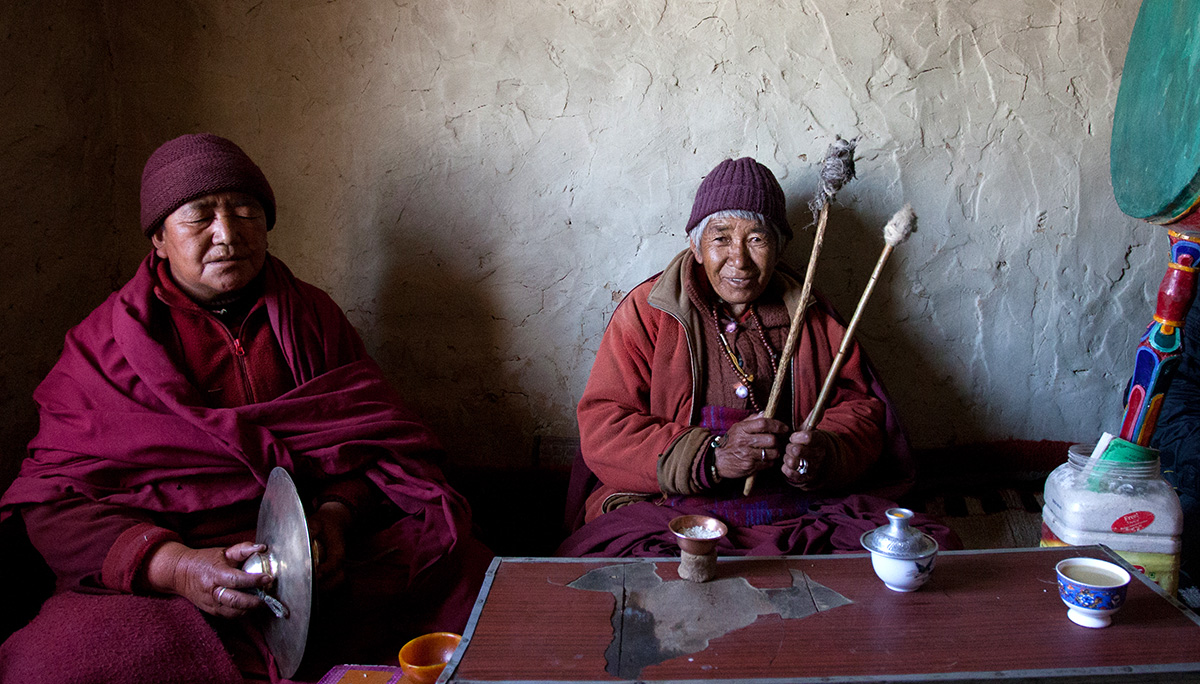
Nuns offering prayers for long life at the house Samphel, a changpa, whose house is located in one of the settlements near Leh-Manali highway. Photograph by Arun Bhat.
Most villages with sizeable population in Ladakh usually have a monastery located on a crag outside the village. For the changpas, the monastery at Korzok Village on the bank of magnificent Tso Moriri lake serves as an important place of worship. The monks at the monastery serve as advisers and priests for much of changpa people spread across Changthang. Every year, during Korzok Gustor festival at the monastery, a large number of changpa descend into the village to celebrate, often dressed in their best and eager to meet their relatives spread across the landscape. The festival involves many celebration rituals including vigorous masked dances performed by the monks.
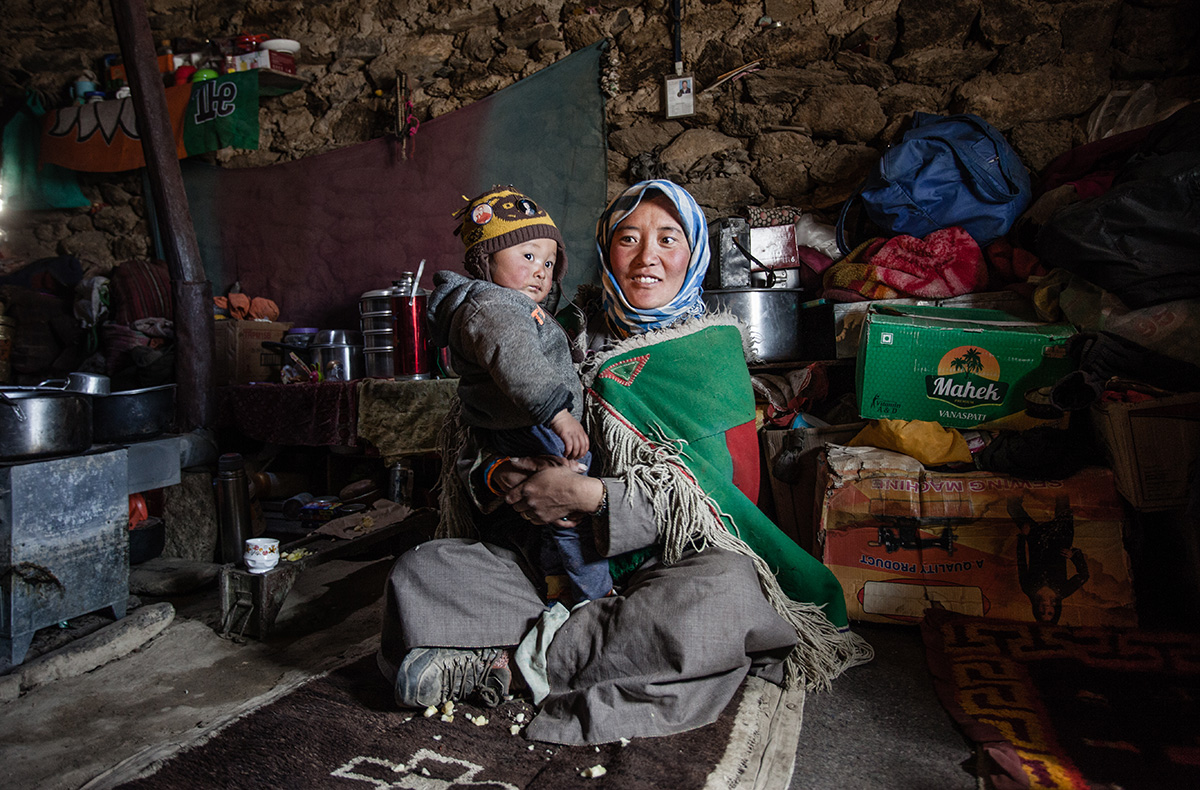
Jigmet Lhamo, a changpa lady, with her son in a settlement where they spend nearly four months every year before migrating further. Photograph by Arun Bhat.
While changpa have to live in remote highlands and endure the tough weather, their life is slowly getting modernized. A lot of families now own four-wheelers that enables them to commute to the towns and access necessary materials from the outside world. Nearly every family now has cooking gas cylinders, even though they still burn dry shrubs for warmth and other necessities that require continuously burning fuel. Most settlements have access to some kind of a crude roads that allows them to bring in things that may not have been possible otherwise.
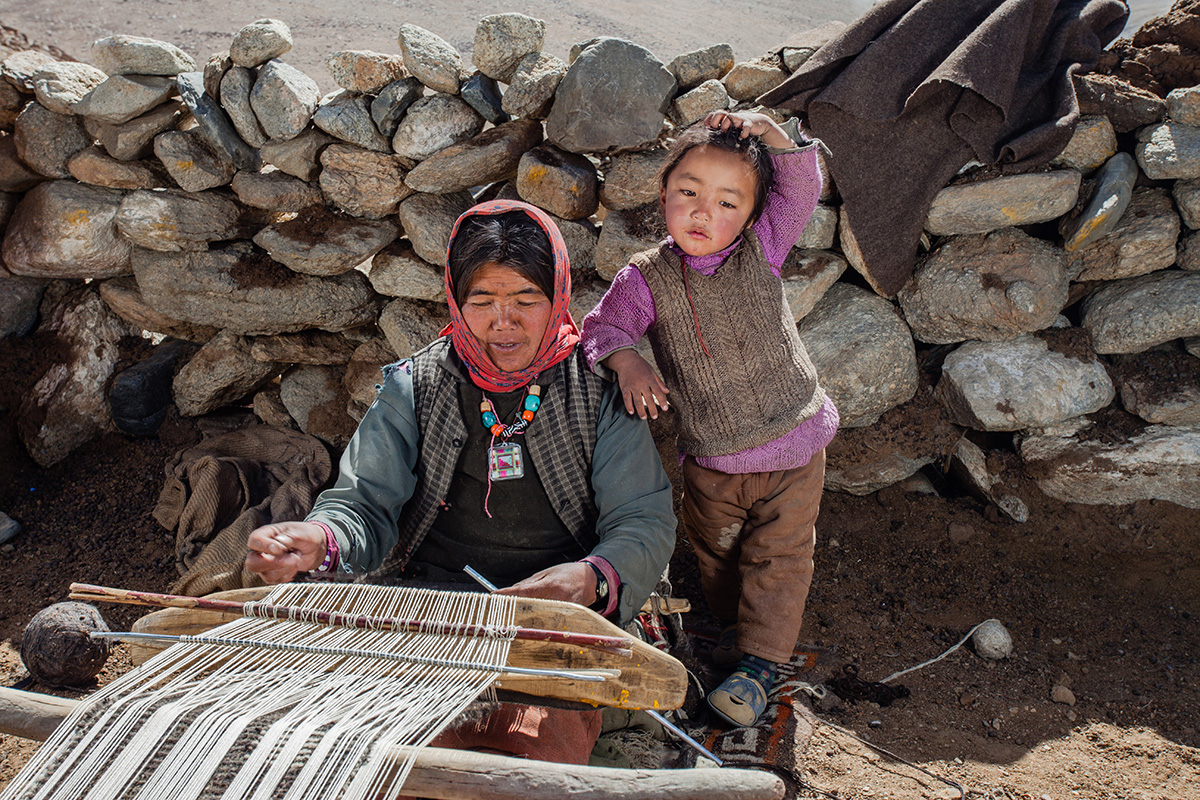
Yangdol, a changpa, weaves a carpet using a yarn that is a blend of wool and cotton, while her kids play in the vicinity. Photograph by Arun Bhat.
However, the years that see excess snowfall may lead to a major crisis. Precipitations that pile up two feet high snow may lead to situations where the animals no longer have access to the grass, requiring the changpa and the local government bodies to work towards procuring grass from elsewhere, which will be critical for survival of the animals.
A typical changpa settlement can easily have as many as ten thousand animals. The sheep returning home in the evenings are likely to cause a small localized dust storm. A family normally owns about two hundred to six hundred sheep depending on how large a flock they are able to manage. The prosperity of a changpa family is a direct function of the number of animals they own. It’s a spectacle watching the animals come down the mountains towards their settlement everyday. They look like an endless flow, that may begin as early as 5pm and continue to arrive for next two hours until the daylight begins to fade. Often in a settlement, sections of land is allocated to families for grazing and follow a well worked plan on how the grasslands should be shared within the community to permit a sustainable use. Each flock has to be carefully managed by a shepherd, who watches over the flock carefully to ensure that the sheep don’t stray away. A sheep that has strayed is often in danger from the predators, which can be feral dogs that often roam the region and occasionally the elusive snow-leopard. Yaks are an important part of changpa life. These animals help the the changpa survive the harsh weather of the highlands. Traditionally, yak-wool rebo kept them warm irrespective of outside weather. Yak wool and skin were also part of clothing that kept people protected from the cold. The hide could be used in making shoes that allowed people walk the entire day with their animals. Yak butter and cheese are an integral part of changpa diet, and so is yak meat. Perhaps the yaks are also easier to manage. While the sheep require constant attention of a herder all through the day to ensure that they don’t stray away and are protected from predators, yaks are usually let loose and graze on their own. Changpa have lived for thousands of years in these lands, carving out a unique way of life required to survive in this harsh and arid region. Buddhism has a significant influence in the way of life of these people, which is evident from chortens (stupa) and prayer flags that you see all along the landscape. In today’s connected world, a few changpa have tried to find a life outside the region, working in the town of Leh or searching for other opportunities. Changpa children are now being schooled with boarding at a few locations and are also going to schools in Leh. Some of them may set up their life in faraway places when they grow up.Several changpa families now have a home setup in Leh, which is mostly inhabited by family elders and school-going children. Yet, there are instances of a few changpa returning to their roots to continue the shepherd life that they found beneficial to working for someone else in an urban setup. The wool from pashmeena goats fetch a premium and the economics of rearing them is generally deemed good, which can help preserve the changpa way of life in the days to come despite the harsh and difficult environment that they live and work in.
Every October, we conduct a week long mentored photography tour that offers an unparalleled opportunity to a small number of photography-enthusiasts to experience the life of changpa nomads. We stay in changpa settlements and interact closely with them, photographing and documenting their lives and lifestyle. To be a part of this unique photography tour, visit “Ladakh: Life of Changpa Nomads Photography Tour” to know more details and sign up.
For a brief outlook on what we see and photograph, also see the video below.

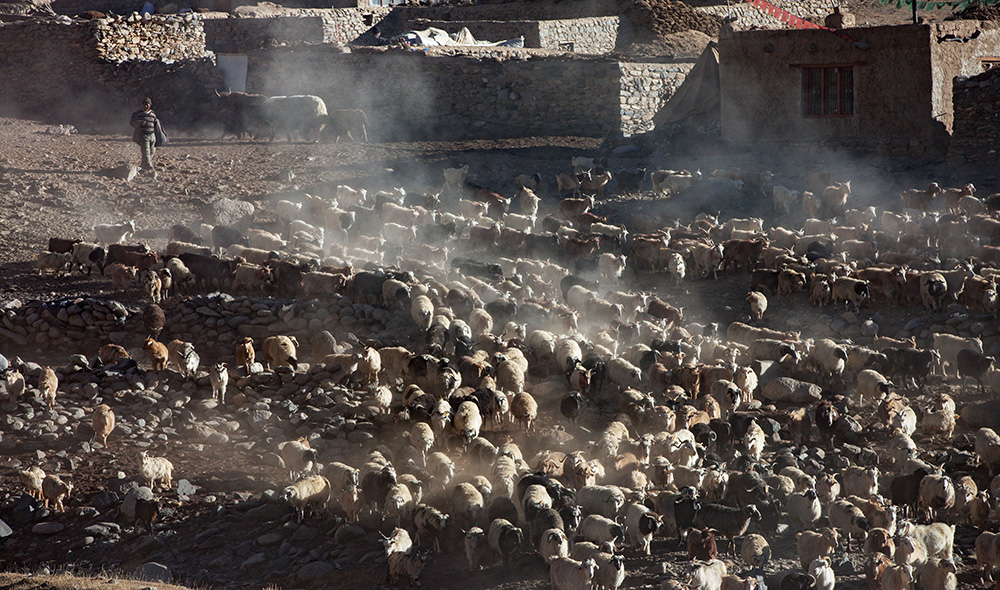
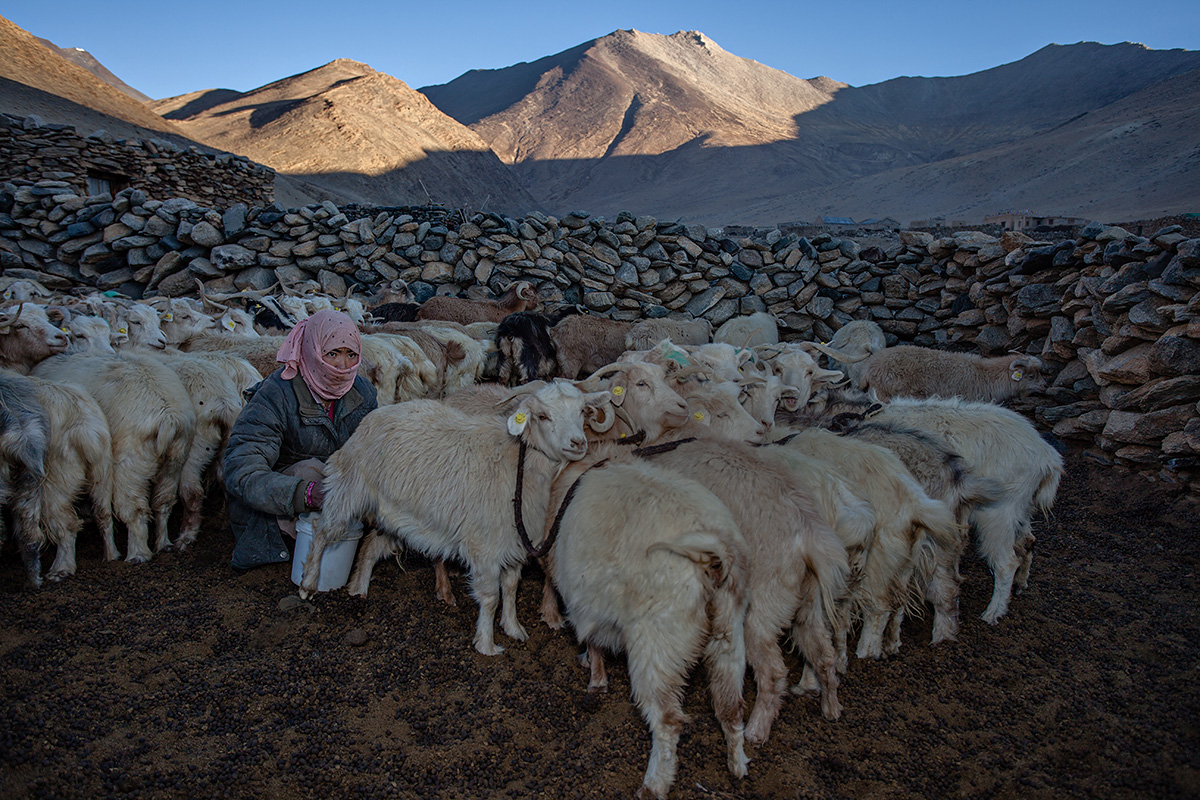


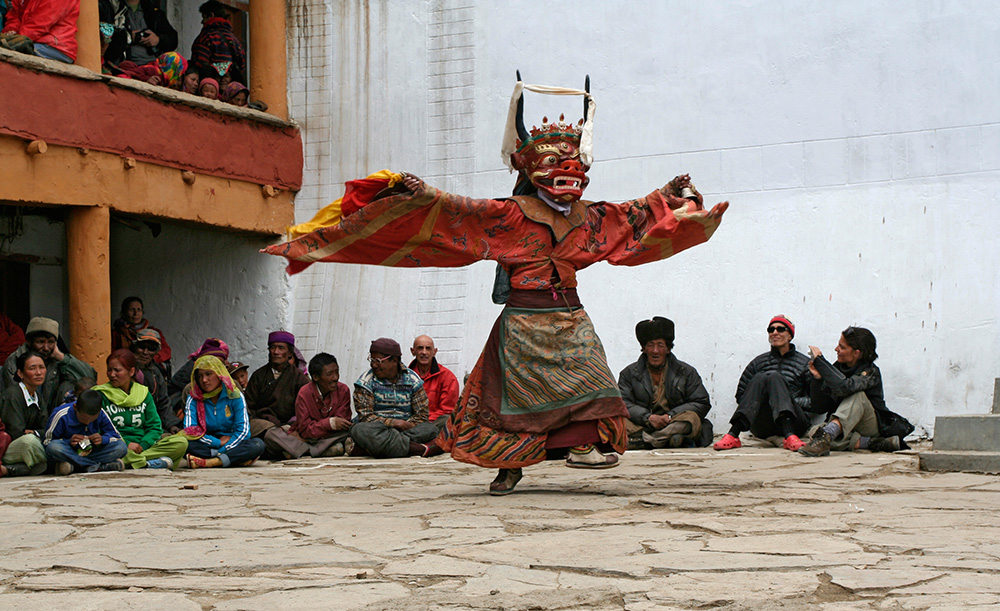
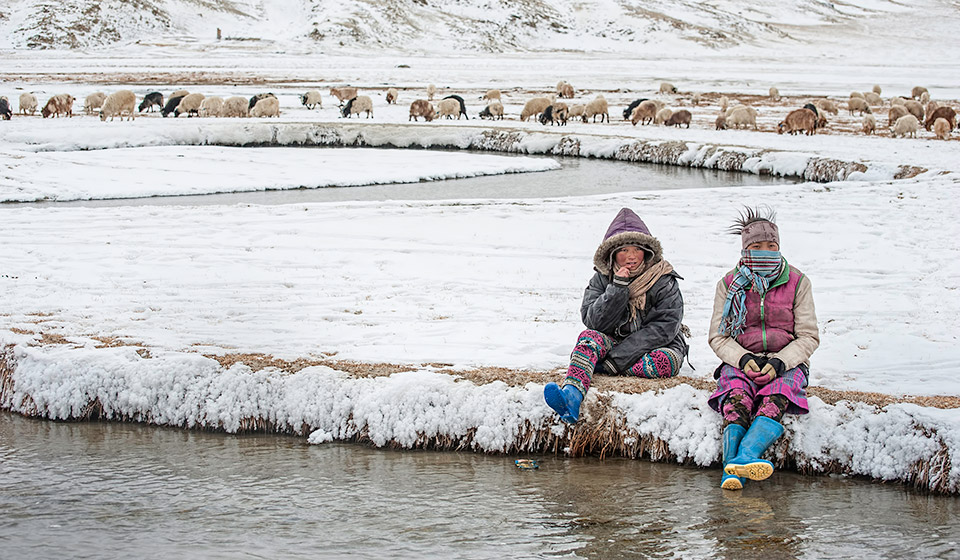
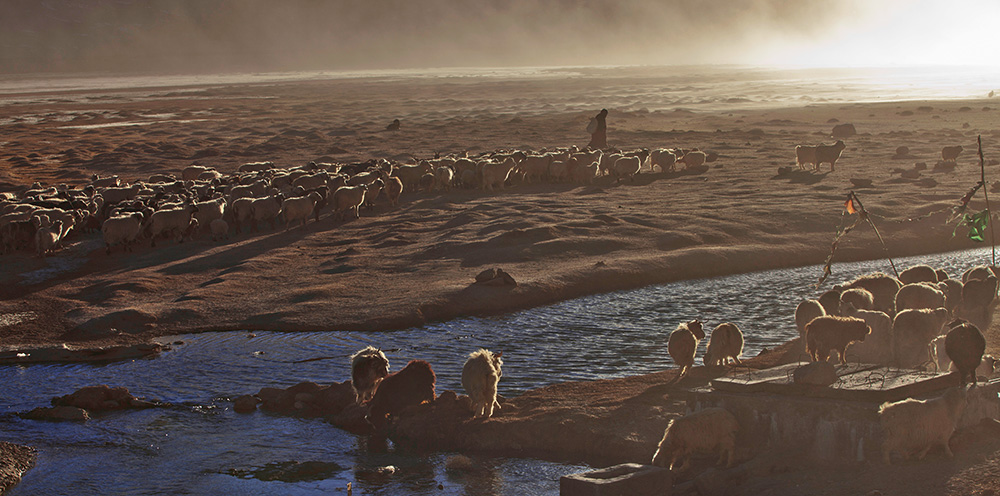

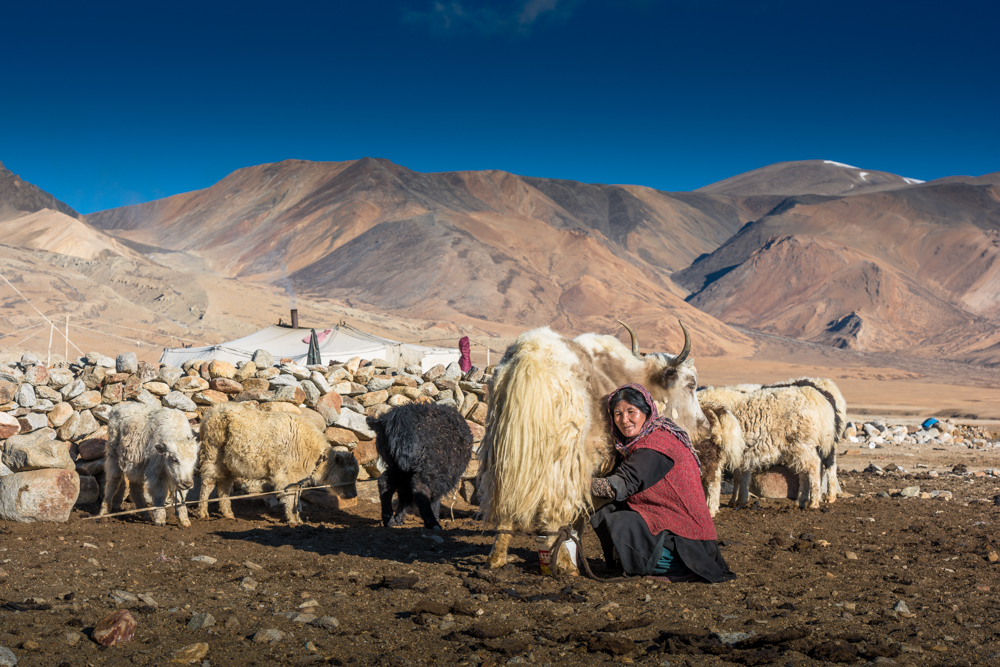

4 Comments